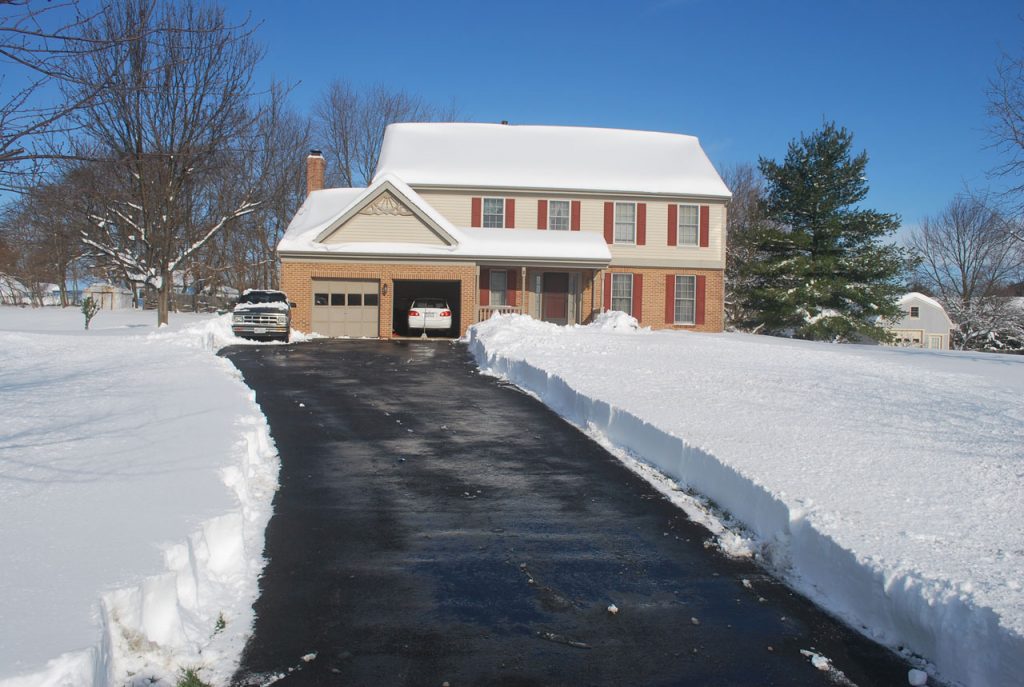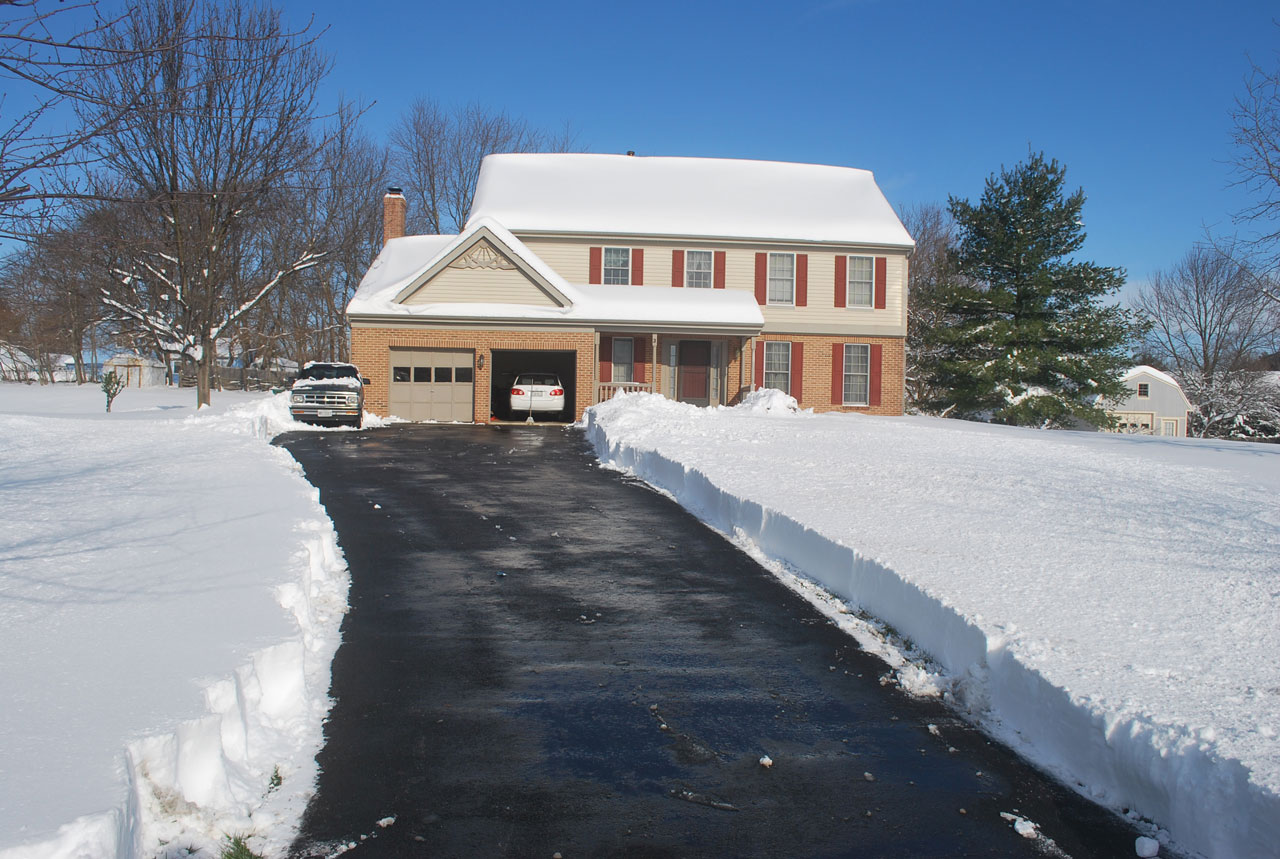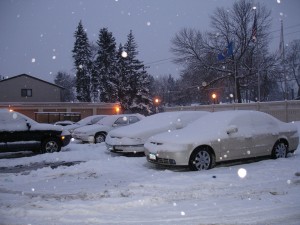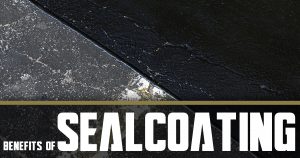
As the cold weather looms over us, we often forget the important maintenance we need to do before it hits. Believe it or not, it is not necessarily the harsh cold temperatures that can negatively affect your asphalt surface. When ice and snow melt, it creates pooling water on asphalt. This greatly compromises the integrity of the surface when the water freezes and expands in the cracks. Along with freeze-thaw conditions, there are other things that can damage your asphalt surface. Get your asphalt ready for winter and protect it with these tips!
Clean Up Debris
Get off to a good start by cleaning off excess debris off your driveway. This is especially true if you use a snowplow. Large pieces of debris can cause problems with snowplows and can damage your asphalts surface over the course of a long, cold winter. Any small driveway debris can be swept away easily with a broom or a leaf blower. Just because they are small, doesn’t mean you shouldn’t get rid of them. Cleaning the surface of your asphalt will reveal any existing structural issues, like cracks or potholes. When you find out what needs to be repaired, you can go on to the next step in preparing for winter.
Repairs
Now that your surface is cleared off, you can start repairing. Fill in any cracks in your pavement, so that water cannot seep underneath and compromise the base. Then sealcoat, if there is still time, the surface. Don’t wait too long to sealcoat. Sealcoating needs a nightly temperature of at least 50 degrees to properly cure. If you waited too long to seal, still fill in cracks. One line of defense is still better than none. Any untouched repairs will suffer damage throughout winter, leaving you with a bigger problem in spring. All winter, water will freeze and expand, then melt and contract. This puts pressure on asphalt leading to widening and lengthening of cracks. Too many cracks and they will all bind together creating a complex network of cracks called alligator cracking.
Standing Water
If you see standing water now, you’ll see a pothole in the spring. You can either repair the surface now, or you can wait for an early spring service to fix the problem before it gets worse. If you choose to repair these areas before the winter hits, you’ve made a good choice. Standing water easily turns into ice, which is dangerous and also damaging. However, if you choose to repair these area’s in Spring, make sure you know where they are. Remove as much standing water as you can before it turns into ice.
Break Out The Shovel
The easiest way to keep standing water and snow off your asphalt is to shovel regularly. Taking the time to remove snow before it can melt will prevent damage and keep your asphalt surface clear. If you are using a plow to remove snow, be cautious. Plows can snag on small cracks and potholes, and improper usage of a plow can easily result in further damage to preexisting potholes or cracks. The best tool: A sturdy plastic shovel. Find shovels that do not have overly sharp edges that can chip and damage the pavement. You’ll save yourself a lot more time and money buying a shovel than you would repairing further damage.
De-icing
There are a few things to consider before applying a deicer to the surface of your driveway. There are many different types, all of which are created for specific temperatures and results. However, deicing products are controversial because of their environmental impacts. They are bad for animals, plants, and the environment and, thus, should be used sparingly. This should be considered for salt too. Salt in water runoff affects the health of plants and animals as well as local waterways. That being said, you still want to prevent any slipping. Look for a natural deicer, like sand, and be knowledgeable about what you are putting into the environment. Shovel or plow snow away before applying a deicer and be sure to use it sparingly.
Repair Potholes
Pothole repair can be tricky when the weather turns. However, it is important to repair them to prevent them from spreading and causing further damage. If potholes are left ignored over winter, they will increase in size. Always contact a professional about your pothole repair options and do not attempt to fix them yourself. You will be left with a larger problem that is sure to come back.
Supreme Sealing has specialized in sealing, asphalt and pavement repair in the Western New York community for more than 25 years. With the cost of new blacktop and blacktop repairs steadily rising over the past few years, the need for crack filling (hot liquid asphalt) and seal coating as a preventative asphalt maintenance measure, has never been more apparent. For an estimate or consultation on any of the services we provide, please call our office at (716) 681-5262. Or you can fill out our contact form and we’ll get back to you as soon as possible.



